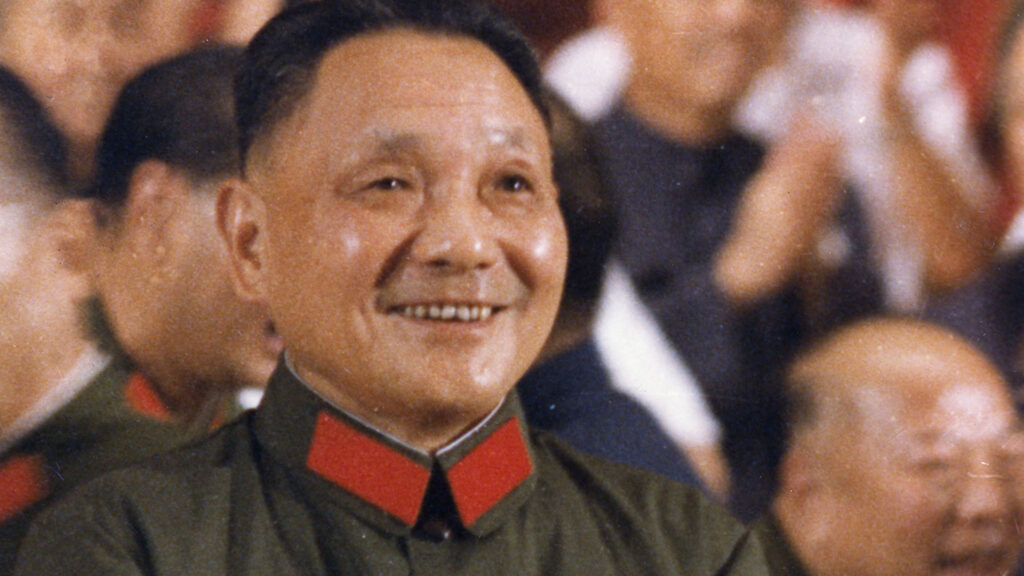By Samir Mechel, YCL-LJC member in Hamilton
Dr. Ezra Vogel taught social sciences at Harvard University from 1964 to 2000, specializing in East Asia. He remained academically active until his death in December of last year. His most well-known book, Deng Xiaoping and the Transformation of China (Harvard University Press, 2011), has quickly become a standard text on contemporary Chinese economics and politics. The book lacks the fear-mongering and orientalism that typically characterize American-written books about China; in fact, it has sold over one million copies in the PRC (where Vogel is known as 傅高义), a rare feat for an English-language Chinese history book.
This may not be as much of a surprise when one considers the background of the book. Vogel was a fluent Mandarin speaker with extensive research experience in China. He first visited in 1973, where he met Premier Zhou Enlai (though he never met Deng). Vogel’s research is unparalleled, spanning tens of thousands of pages of primary and secondary Chinese sources, many of them never before discussed in English. He interviewed over one hundred of Deng’s colleagues, their family members, and party historians, including former paramount leader Jiang Zemin and two of Deng’s daughters (Deng Rong and Deng Lin). He also conversed with many former Soviet/Russian, Japanese, Singaporean, American, Australian, and British officials and scholars. In fact, the entire book was hand-checked by the CIA in order to prevent the release of classified information, further demonstrating the level of depth contained within. Perhaps China Daily had the most succinct summary of Vogel’s work, calling him “a son of the West whose passion pointed East.”
While marketed and titled as a biography of Deng Xiaoping, the bulk of the book consists of general Chinese political and economic information. While it covers Deng’s youth and early career, the overwhelming majority consists of the period of his main leadership role from the mid 1970s to the late 1980s. Great attention is paid to the Cultural Revolution (in which Deng’s son was severely injured), the leadup to the transfers of Hong Kong and Macau, and foreign relations with the USSR, Vietnam, and the US. However, the main focus of the book, as the second half of the title suggests, is the reform and opening-up that began in the late 1970s. The book goes into immense detail on organization, wages, and production of everything from individual factories to national trends in industry and agriculture. The book also gives the most detailed and nuanced presentation of the Tiananmen Square protests of 1989 that I have seen in a mainstream English publication. Some of the major figures detailed in the book, rarely discussed in North America, include Chen Yun, Hu Yaobang, Li Xiannian, and Zhao Xiyang.
The book mostly avoids the common trope of painting Deng Xiaoping as either (or sometimes simultaneously) an “evil communist tyrant” or “great capitalist reformer”. However, Vogel is no communist, and portrays the development of any kind of “markets” as an overall positive phenomenon. To him, Deng was struggling to liberalize China against the “conservatives” in the party, who opposed or wanted to reduce the scale of the reforms. In this regard, Vogel has a tendency to portray historical developments as struggles between “great men” rather than as results of material conditions, though to a lesser extent than most non-Marxist historians. Despite his overall support for the Chinese economic reform, Vogel also covers some of its negative aspects, such as severe inflation in the late 1980s and mid-1990s. However, he does not go into detail on other key issues, such as environmental damage. Perhaps that is outside the scope of the book, but considering its length (928 pages), it would have been useful to see; for example, it could have replaced some space used to repeat information about certain individuals or phenomena. While it can be beneficial to repeat certain facts or ideas in certain contexts, the book occasionally does it more often than is necessary.
Those criticisms notwithstanding, Deng Xiaoping and the Transformation of China is thoroughly worth reading for anyone interested in late twentieth century Chinese history. While its length may cause some hesitation, the time invested in reading will almost certainly not be regretted.

